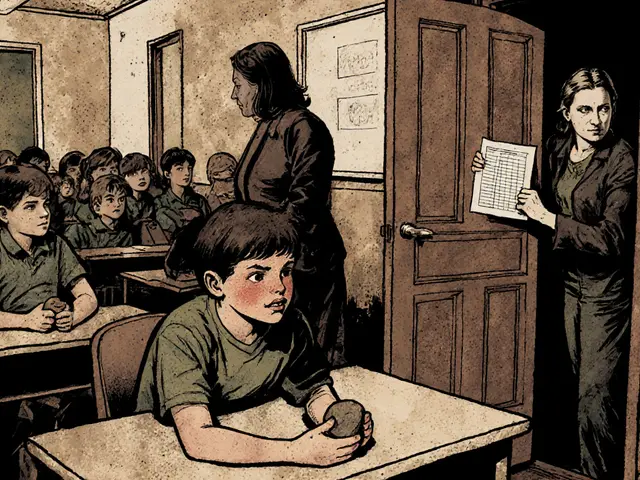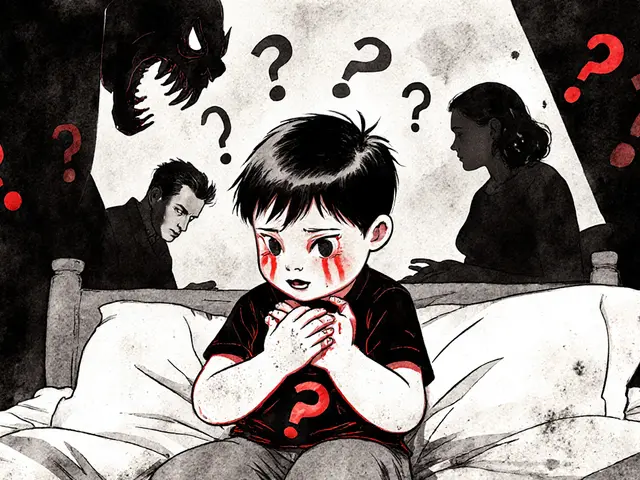ICD‑10 – co to je a proč je důležité pro psychoterapii
When working with ICD‑10, Mezinárodní klasifikace nemocí, 10. revize, slouží k jednotnému kódování diagnóz včetně duševních poruch. Also known as International Classification of Diseases, it provides the backbone for health records, insurance billing and research. Understanding its structure helps you navigate therapy options and communicate clearly with professionals.
Jak ICD‑10 souvisí s diagnostikou
Therapeutic work starts with a solid diagnóza, systematické určení zdravotního stavu na základě klinických příznaků a klasifikace. In practice, clinicians map symptoms to specific ICD‑10 codes, which then guide treatment planning. The link “diagnóza uses ICD‑10” creates a reliable reference point for both client and therapist.
Because ICD‑10 defines each mental health condition with precise criteria, therapists can choose evidence‑based approaches that match the coded disorder. For example, an F41.1 kód (generalizovaná úzkostná porucha) typically leads to kognitivně‑behaviorální terapii (KBT) as first‑line treatment. This semantic connection – “ICD‑10 directs therapeutic choice” – clarifies why coding matters beyond paperwork.
When you think about duševní zdraví, celkový stav psychické pohody, zahrnující emoční, sociální a psychologické aspekty, ICD‑10 acts as a map. It groups related disorders, highlights comorbidities, and shows how one issue can affect overall wellbeing. The relationship “duševní zdraví is assessed through ICD‑10” helps clients understand the broader picture of their mental state.
Clinicians also rely on klinikické kódy, kódy z ICD‑10, které přesně popisují diagnózu a slouží k evidenci a fakturaci. These codes are the practical bridge between medical record systems and therapeutic interventions. “ICD‑10 provides klinické kódy” is a key semantic triple that underpins reimbursement and statistical reporting.
Therapeutic approaches vary, but most are anchored in the same classification system. Whether you explore interpersonální terapii (IPT) for deprese, dialektickou behaviorální terapii (DBT) pro hraniční poruchu osobnosti, nebo arteterapii pro děti, každý směr je přiřazen k určitému ICD‑10 kódu. This connection – “terapeutický přístup aligns with ICD‑10 categories” – ensures that treatment is evidence‑based and tailored to the diagnosed problem.
Our collection of articles reflects this ecosystem. We cover sebereflexi před výběrem terapeuta, praktické tipy pro krizové situace, etické otázky a specifické terapeutické metody jako stimming u autistů nebo digitální hranice ve vztazích. Each text ties back to ICD‑10, showing how coding influences choice, cost, a i dostupnost služeb.
Looking ahead, you’ll discover how ICD‑10 shapes pricing, daňové odpočty a dokonce i možnosti online terapie. The material is relevant for klienti i odborníky, ať už jste na začátku cesty nebo už máte za sebou několik sezení.
Prohlédněte si níže uvedené články a najděte konkrétní rady, které vám pomohou využít informace z ICD‑10 ve vašem osobním růstu nebo profesionální praxi. Tento úvod vám poskytl základní rámec; další podrobnosti najdete v jednotlivých příspěvcích.

Třískupinové dělení poruch osobnosti: Co říkají klastry A, B a C
Vysvětlení třískupinového dělení poruch osobnosti, detailní popis klastrů A, B, C, klinické využití a budoucí změny v diagnostice.
Pokračujte ve čtení








